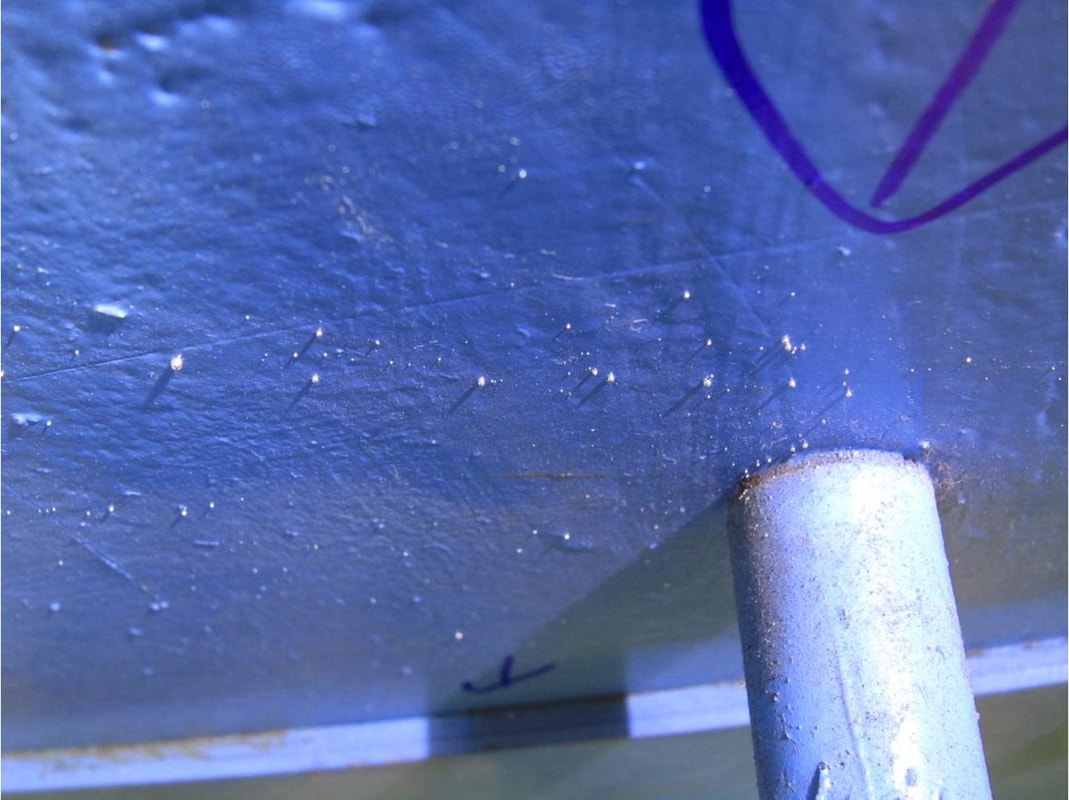Mercury poisoning poses severe health risks to individuals and communities, making it a critical public health issue. As a heavy metal, mercury can cause significant harm when it contaminates ecosystems, transforming into methylmercury – a toxic compound that accumulates in fish and wildlife, leading to dangerous exposure levels.

At 3D Enviro, we understand the urgency of addressing mercury contamination. Activities like coal combustion and gold mining have heightened global concerns over mercury pollution. Our work focuses on detecting hazardous materials early on. From there, we implement effective remediation strategies for mercury-contaminated laboratory and industrial sites, ensuring timely and cost-effective solutions.
In this article, we will explore the health impacts of mercury poisoning, the symptoms and signs to look out for, and the importance of proper testing and diagnosis. We’ll also explore effective remediation techniques, prevention and safety measures, and global efforts to manage mercury pollution. By the end, you’ll have a comprehensive understanding of why proactive mercury remediation is essential for safeguarding public health and the environment.
Health Impact of Mercury Poisoning
Mercury poisoning affects various systems within the body, posing serious health risks. It concerns individuals of all ages but is particularly concerning for children and pregnant women.
Acute and Chronic Effects of Mercury on Health
Acute mercury exposure can result in symptoms such as respiratory distress and impacts on the nervous system like tremors or cognitive difficulties. In contrast, chronic mercury exposure may lead to more insidious health effects, including impairments to the nervous system and kidneys.
Health effects can range from mild symptoms to severe, life-altering conditions:
- Nervous system: Impaired neurological function, which may manifest as memory problems or decreased cognitive ability.
- Digestive System: Abdominal pain and changes in bowel habits.
- Lungs: Respiratory problems due to inhalation of mercury vapors.
Chronic exposure can even lead to irreversible damage to the brain and kidneys. Studies, including a systematic review on the impact of mercury exposure on small-scale gold miners’ health, highlight the pressing need for exposure mitigation measures and health monitoring.
Vulnerable Populations: Children and Pregnant Women
Our special concern is for vulnerable populations, notably children and pregnant women. In children, even low levels of mercury exposure can impair development, particularly of the nervous system, making early detection and prevention critical.
For pregnant women, mercury can cross the placenta and affect the developing fetus, which is why it is crucial to minimize exposure. Our focus includes understanding the toxic-pathologic implications of mercury to public health, especially among susceptible groups.
“We know that mercury exposure, even at low levels, can cause serious neurological issues, including anxiety, depression, and central nervous system disorders. It’s particularly dangerous for unborn babies and children.” -Lauren Neese, CEO of 3D Enviro
|
Group |
Effects of Mercury Exposure |
Primary Sources of Exposure |
|
Fetus |
Developmental delays and learning disabilities due to exposure in utero |
Environmental exposure in gold-mining areas |
|
Infants |
Risk of mercury exposure primarily through consumption of fish containing mercury or through environmental sources |
Mercury-contaminated fish, environmental sources |
|
Children |
Lasting effects including poor performance in tests assessing attention, fine motor function, and verbal memory |
Continued consumption of mercury-contaminated food, environmental sources |
The American Academy of Pediatrics stresses the implications of environmental mercury for pediatric health and advocates for preventative measures to protect young populations.
We are committed to educating and working with Federal agencies, universities, construction/engineering firms, and environmental consulting firms to mitigate these hazards.
Our goal is to ensure that facility managers, environmental health and safety officers, and operations managers understand the risks and implement strategies to reduce mercury exposure in vulnerable populations.
Symptoms and Signs of Mercury Poisoning

Mercury exposure can result in a range of adverse health effects, particularly targeting the nervous system and cognitive function. Early detection of these symptoms is crucial for managing and mitigating mercury poisoning’s risks. The main signs and symptoms of mercury poisoning can be classified as follows:
- Cognitive and neurological symptoms
- Physical and sensory symptoms
1. Cognitive and Neurological Symptoms
Mercury poisoning can manifest in several cognitive and neurological issues that hamper brain function. Among these:
- Memory: Struggles with short-term memory loss or recall difficulties.
- Attention: Reduced ability to focus or concentrate.
- Cognitive thinking: Impairment in judgment or decision-making.
- Nervousness: Anxiety that is often unexplained and pervasive.
- Depression: Persistent feelings of sadness or hopelessness.
- Insomnia: Difficulty falling or staying asleep.
These symptoms not only affect personal well-being but can also compromise work safety and operational efficiency in workplace environments.
2. Physical and Sensory Symptoms
Physical and sensory symptoms of mercury poisoning include:
- Tremors: Involuntary shaking, particularly in the hands.
- Muscle weakness: A general feeling of physical weakness.
- Headaches: Frequent or severe head pain.
- Numbness: Loss of sensation in extremities or around the mouth.
- Pain: Discomfort in muscles and joints.
- Rashes: Skin disruptions that can lead to itching.
Difficulty breathing and, in severe cases, paralysis may also occur, requiring immediate medical attention. It is essential for workplace health and safety officers to be alert for these signs among their teams, ensuring swift action is taken to reduce risk and exposure.
How To Test And Diagnose Mercury Poisoning
Identifying mercury poisoning is crucial. It involves a careful medical assessment and specific laboratory tests to confirm exposure and guide treatment.
Assessment and Medical History
When mercury poisoning is suspected, specific steps are needed to confirm it. First, the patient’s symptoms and medical history are assessed. Then, doctors conduct laboratory tests to measure mercury levels in the body.
In this phase, the doctors look at the patient’s symptoms and ask about their history of exposure to mercury. Common symptoms they check for include:
- Burning sensation in the stomach or throat
- Nausea or vomiting
- Anxiety or depression
- Memory problems
- Numbness in the hands, feet, or around the mouth
- Shyness that seems out of character
- Uncontrollable shaking, or tremors
They also perform a physical exam to look for signs of mercury exposure.
Treatment and Management
When someone has mercury poisoning, MDs focus on getting the mercury out of the body and supporting the person’s health as they recover.
Decontamination and Supportive Care
Immediate decontamination reduces the risks associated with mercury exposure. Removing contaminated clothing can prevent further absorption of mercury.
In parallel, supportive care is provided, which includes administering oxygen and intravenous (IV) fluids to maintain vital organ function during recovery. Ensuring a safe environment during decontamination and treatment is paramount for patient and staff safety.
- Decontamination Steps:
- Remove contaminated clothing
- Wash skin thoroughly
- Supportive Care:
- Oxygen administration
- IV fluids
Mercury Remediation Techniques for Indoor Environments
Mercury pollution poses significant environmental and human health risks, particularly in indoor settings where exposure can be more concentrated and hazardous. Effective mercury remediation techniques are crucial for mitigating these dangers and ensuring safe living and working environments.
Traditional Indoor Remediation Methods
The primary traditional method for indoor mercury remediation is source removal and proper ventilation. This involves identifying and removing mercury-containing items, such as old thermometers, fluorescent bulbs, and electrical switches, from the premises.
Proper ventilation ensures that any mercury vapor released during the removal process is diluted and expelled from the indoor environment. Cleanup of small mercury spills typically involves the use of specific cleaning agents and tools designed to safely collect mercury droplets and residues.
Cutting-edge Indoor Remediation Technologies
Recent advancements have introduced innovative technologies tailored for indoor mercury remediation. At 3D Enviro, our mercury spill response protocols are meticulously structured to ensure a comprehensive and safe cleanup.
We precisely delineate the contaminated area using advanced Ohio Lumex Mercury Analyzers for accurate detection. Once the spill’s extent is defined, we deploy specialized mercury vacuums designed to prevent mercury vapor escape, thanks to their specialized filters.
“The Ohio Lumex is not an instrument that just can be bought and used out of the bag. It has taken years for our team to know the ins and outs of this device. It constantly monitors air quality and ensures that any mercury vapors are detected and addressed immediately.” – Lauren Neese Truslow, BS in Environmental Science, Chief Executive Officer at 3D Enviro
Acknowledging mercury’s propensity to fragment into microscopic beads, we employ chemical treatments to address residues invisible to the naked eye. This step ensures that all mercury, regardless of bead size, is effectively neutralized.
Following the chemical treatment, a thorough reassessment with the Ohio Lumex confirms successful remediation, ensuring mercury levels are reduced to safe standards.
Our approach leverages cutting-edge technology and expertise, making sure the cleanup process is both thorough and safe, leaving no trace of mercury behind.
“Scott Neese, Ph.D, founder and scientific advisor at 3D Enviro
Specializing in mercury remediation, 3D Enviro ensures that hazardous mercury is managed safely. Our expertise promotes public health by preventing mercury from seeping into the environment. Partnering with federal agencies, universities, and construction firms, we play a crucial role in reducing the likelihood of mercury poisoning by detecting mercury contamination in construction sites and renovations.
Materials in Mercury Remediation
When cleaning up mercury, materials like activated carbon and sulfur polymer cement are often used. Activated carbon can soak up mercury from the soil and water, much like a sponge absorbs water. Sulfur polymer cement can stabilize mercury, turning it into a solid that is not harmful and is easy to handle.
Today, mercury-contaminated sites often use these materials to safely deal with the toxic metal.
Mercury: The Essentials
Mercury is a potent neurotoxin that impacts public health and the environment in various forms. Identifying the different types of mercury and their presence in the environment is essential for effective remediation.
Mercury Types: Elemental Mercury vs. Inorganic Mercury vs. Organic Mercury Poisoning
Mercury exists in three primary forms: elemental mercury poisoning, inorganic mercury poisoning, and organic mercury poisoning. This table illustrates the differences between these three types of mercury:
|
Type of Mercury |
Characteristics |
Common Sources |
Hazards |
|
Elemental Mercury |
Liquid at room temperature can vaporize |
Thermometers, fluorescent bulbs |
Highly toxic when inhaled |
|
Inorganic Mercury |
Found in various compounds |
Batteries, skin creams, antiseptics |
Toxic if ingested or absorbed through the skin |
|
Organic Mercury |
Includes methylmercury and ethylmercury; mainly from industrial processes |
Industrial processes, contaminated fish |
Accumulates in living organisms, leading to bioaccumulation in the food chain; highly toxic, especially affects the nervous system when accumulated in large amounts |
Mercury in the Environment
Mercury enters the environment from natural sources like volcanic eruptions and human activities such as coal burning and mining. In aquatic systems, microbial action can transform elemental and inorganic mercury into methylmercury. This methylmercury then accumulates in fish, posing a risk to wildlife and humans upon consumption.
Here at 3D Enviro we remediate mercury from naval facilities, medical and laboratory settings, industrial plants, and educational institutions. Success stories include cleaning naval research sites, repurposed medical labs with hidden spills at the National Institutes of Health, and industrial plants like the Bonneville Power Administration site in Oregon. We also address educational institutions, contaminated due to historical mercury use.
Managing mercury contamination in such environments is crucial for safeguarding ecosystems and human health.
Sources of Mercury Exposure

We recognize the critical nature of identifying how mercury enters our environments and the myriad ways individuals can be exposed to this toxic element. From our diet to the industries we work in, mercury exposure is a complex issue.
We often encounter mercury and other toxic substances during and after demolition, in old pipes, or from a mercury spill.
“Mercury is a persistent environmental pollutant that does not break down easily. It can enter water systems and accumulate in the food chain, causing long-term ecological damage.” – Lauren Neese, CEO of 3D Enviro
Natural vs. Anthropogenic Sources
Mercury exists naturally in the earth’s crust and vaporizes into the atmosphere or can leach into water systems. Human activities, like mining, significantly amplify the release of mercury. Anthropogenic—or human-caused—sources include not only mining but also industrial processes, like the burning of coal and waste incineration.
Global Distribution and Hotspots
Mercury disperses globally through atmospheric circulation but can settle in specific areas, creating hotspots. These areas often correlate with:
- Heavy industry
- Mining operations
- Places where mercury has been used historically in manufacturing
Industrial and Household Products
Mercury was once an active component in various products, such as thermometers and dental fillings. Exposure can occur from the release of mercury during the use, breakage, or disposal of these items.
It’s crucial for us to understand product life cycles to prevent future exposure.
Dietary Sources
Mercury-contaminated fish play a prominent role in human exposure to mercury toxicity through the diet. They can accumulate mercury from their environment. As we consume fish, we risk ingesting mercury, which climbs up the food chain.
Occupational Exposure
Individuals may encounter mercury in their workplace, especially within facilities that handle heavy industrial equipment or where mercury is used in production or research processes or in old machinery or equipment. To mitigate such risks, at 3D Enviro, we focus on safe practices and proper disposal. In highlighting these sources, we are committed to reducing mercury exposure for the environment’s safety and public health.
Prevention and Safety Measures
We recognize the importance of minimizing mercury exposure to protect health and the environment. To achieve this, certain guidelines, especially occupational safety and dietary guidelines, should be followed.
Reducing Occupational and Environmental Risk
Mercury exposure at workplaces can be significantly decreased by implementing rigorous safety protocols. We suggest:
- Use mercury-free processes and materials when possible.
- Ensure proper ventilation in areas where mercury is present.
- Employ personal protective equipment (PPE) when handling mercury.
By focusing on these strategies, we prioritize our commitment to safety, safeguarding not only our immediate environment but also contributing to a broader effort to protect public health.
Dietary Guidelines and Consumption Advice
Adhering to established dietary guidelines is crucial to protecting ourselves from mercury poisoning. Consuming seafood and ocean fish can be healthy, but some fish have higher levels of mercury that can be harmful.
- High Mercury Fish: We must avoid eating shark, swordfish, and some shellfish, as they tend to contain higher levels of mercury.
- Low Mercury Seafood: We should opt for seafood with lower mercury content more often, such as shrimp, canned light tuna, salmon, pollock, and catfish.
- Consumption Frequency: We should always check guidelines provided by food safety authorities and limit our consumption of certain fish.
Here’s a table for reference from the US EPA & FDA:

Source: Food & Drug Administration
Lessons Learned and Best Practices
In our efforts to combat mercury pollution, we’ve established that thorough environmental assessments are crucial. We actively engage in identifying contamination sources promptly to mitigate the spread and impact of mercury.
Best practices we endorse include:
- Routine Surveillance: We support constant monitoring of environments suspected of mercury contamination.
- Immediate Response: At any detection of mercury, we initiate immediate containment and cleanup procedures.
- Community Education: We aim to heighten awareness about mercury risks, educating on proper disposal and handling methods.
Safety Protocols:
- Personal Protective Equipment (PPE): Always use PPE when dealing with mercury to prevent direct exposure.
- Proper Ventilation: Ensure areas with potential mercury vapor are well-ventilated to lower inhalation risks.
- Mercury Vapor Testing: Regularly test the air for mercury vapor to ensure levels remain safe and below regulatory limits.
Wipe samples and Jerome Meters, while historically utilized for mercury spill detection, have limitations that render them outdated compared to modern mercury vapor testing methods. Here are the reasons why they are considered outdated:
|
Criteria |
Wipe Samples |
Jerome Meters |
Modern Mercury Vapor Testing |
|
Detection Scope |
Only detects mercury on surfaces, missing vapor in the air. |
May miss low levels of mercury vapor due to sensitivity issues. |
High sensitivity and precision, detecting even trace amounts of mercury vapor. |
|
Time Efficiency |
Time-consuming process of collection, transport, and analysis. |
Response time can be slower compared to modern devices. |
Provides real-time data for immediate detection and response. |
|
Consistency |
Results can vary based on technique and thoroughness of the sample collector. |
Accuracy depends on user’s expertise and experience, introducing variability. |
Automated and user-friendly, reducing the risk of human error and ensuring consistent, reliable results. |
|
Data Timeliness |
Does not provide immediate results, delaying prompt remediation actions. |
Slower response time impacts quick assessment and response. |
Real-time monitoring enables immediate detection and response. |
|
Labor Intensity |
Labor-intensive, impractical for large or complex environments. |
Requires regular calibration and maintenance, which can be cumbersome. |
Typically portable and versatile, suitable for various settings. |
|
Sensitivity and Range |
N/A |
Limited detection range and sensitivity may not be effective in extreme environments. |
High sensitivity and accuracy, effective in detecting mercury vapor even in trace amounts. |
|
Calibration and Maintenance |
N/A |
Requires regular calibration and maintenance to ensure accuracy, prone to errors if not performed correctly. |
Often automated and requires less frequent maintenance. |
|
User Dependency |
N/A |
Heavily dependent on user expertise, introducing potential for error. |
Less user-dependent, designed for ease of use and reliability. |
|
Comprehensive Detection |
Only detects mercury on surfaces, missing the critical aspect of vapor detection for environmental and occupational safety. |
Limited to vapor detection within a narrow range. |
Comprehensive detection capabilities, including mercury vapor in the air, crucial for environmental and occupational safety. |
This table highlights the limitations of wipe samples and Jerome Meters compared to the advantages of modern mercury vapor testing methods.
Mercury Spill Management:
- Isolate the area.
- Use mercury-specific absorbent materials.
- Secure and dispose of mercury waste per regulations.
Our experience tells us collaboration is key in aligning with agencies and firms. We share knowledge on emerging remediation technologies to facilitate industry advancement. Together, we can create safer environments free from the threats of mercury poisoning.
Legislation and Global Efforts
As leaders in environmental safety, we understand the imperative nature of addressing mercury pollution through robust legislation and global cooperation.
Local and international policies are key to managing mercury pollution. Governments around the world have established regulations to control mercury emissions. In the United States, the Environmental Protection Agency (EPA) sets limits on mercury releases from power plants and other industrial sources.
Regulations on Mercury
Strict regulations can help limit mercury use and prevent its release. These regulations should limit mercury in products and industrial processes.
Despite these environmental regulations, there is a significant gap in the workplace regarding mercury exposure. Unlike lead and asbestos, mercury does not have well-defined exposure limits in many occupational settings. This lack of clear guidelines can lead to a complacent attitude towards mercury safety, which is dangerous given its toxic properties.
Given the toxic nature of mercury, it is imperative to re-evaluate the ASAL (Actionable Safe Allowable Levels) exposure levels in the workplace. Establishing stringent and clear limits for mercury, akin to those for lead and asbestos, is essential for ensuring worker safety.
By defining these levels, industries can implement better safety protocols and monitoring systems to protect employees from the harmful effects of mercury.
Also, by setting emission standards and safe disposal practices, we can decrease mercury pollution and protect public health.
“Mercury is a legacy metal often left behind in industrial sites, laboratories, and hospitals, causing significant environmental hazards. We would like to see better regulations, more education, and proper training to ensure that mercury spills are adequately identified and remediated.” – Lauren Neese Truslow, CEO of 3D Enviro
International Treaties and Programs
The Minamata Convention on Mercury stands as a significant international treaty committed to protecting health and the environment against mercury.
Named after a tragedy in Japan caused by mercury emissions from industrial waste, the convention underlines global commitment to action against mercury use.
The United Nations Development Programme supports countries in implementing the Minamata Convention’s mandates, providing a solid framework for international cooperation.
Final Thoughts
Mercury poisoning poses a significant threat to public health and the environment. At 3D Enviro, we recognize the critical importance of addressing all forms of mercury exposure in patient care areas, workplaces and industrial sites.
Our specialized approach to mercury remediation, leveraging decades of expertise and the latest technology, sets us apart. We offer a comprehensive range of services—from initial site assessments to post-remediation clearances—ensuring reliable and effective results.
Mercury poisoning remains a pressing issue, and preventing mercury contamination at the source requires both comprehensive solutions and an experienced team. 3D Enviro offers a complete range of environmental services—from initial site assessments to post-remediation clearances—providing our clients with reliable, effective results.
We adhere to stringent OSHA regulations, ensuring our team operates under the highest safety standards. As a certified woman-owned small business, 3D Enviro champions diversity and inclusion, strengthening client relationships through unique perspectives and dedicated service. We advocate for stricter mercury regulations, contributing to a safer, healthier environment for all.
If you are ready to address mercury contamination in the workplace with expertise and integrity, we invite you to learn more about our approach and how we can assist you. Discover the success of our projects and what we can achieve together at 3D Enviro Case Studies.
Ready to start a project?
Contact us today at 3D Enviro, and let us help you make a positive impact on public health and the environment. Together, we can tackle the challenges of mercury contamination and poisoning and ensure a safer future for all.
Frequently Asked Questions
What is the role of activated carbon in mercury remediation?
Activated carbon is widely used in mercury remediation because it can adsorb mercury from contaminated air, water, and soil. It acts like a sponge, capturing and holding mercury molecules, which can then be safely removed and treated. Activated carbon is especially effective in water treatment processes.
Can mercury be completely removed from contaminated sites?
While completely removing mercury from contaminated sites can be challenging, advanced remediation techniques can significantly reduce mercury levels to safe standards.
What are the challenges in mercury remediation?
Mercury remediation presents several challenges, including the dispersal of mercury in the environment, the need for specialized equipment, and ensuring the safety of remediation workers. Additionally, the high cost of advanced technologies and the complexity of treating different forms of mercury can complicate cleanup efforts.




